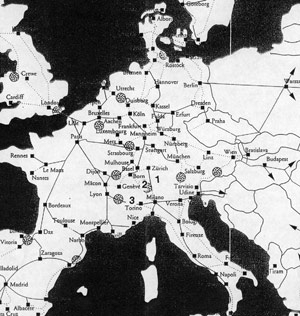Increased truck transportation in Europe and its accompanying environmental problems, particularly along the north-south route through the Alps in western Europe, has prompted the expansion of railways in that region. These railways will need to tunnel through the Alps, requiring deeper and longer tunnels than any in existence.
Professor Herbert Einstein of civil and environmental engineering discussed three of these tunnels and issues of exploration and construction, mostly with regard to the difficult geologic conditions, in his Feb. 18 AAAS talk on "New Transalpine Transportation Tunnels."
Einstein focused on three tunnels: the 57km Gotthard Tunnel and the 36km Loetschberg Tunnel, which are both under construction in Switzerland, and the 53km Maurienne-Ambin Tunnel between France and Italy, which is in the advanced planning stage. All three will accommodate both high-speed passenger and freight trains.
"In a nutshell, the difficulties arise because these tunnels are going to be deeper than present tunnels, they will also be longer and the overburden (or pressure from rock and water above) will be greater," said Einstein.
"In addition, as you go deeper into the Earth, it gets hotter, so you have temperatures in the 50 degree C. range, which makes for difficult working conditions. We'll have to cool the work area; otherwise people will die. They have the same problem in the South African mines; it's difficult but not impossible," he said.
Tunnel builders will encounter a major geologic problem in areas where the geology is soil-like, rather than rock. Soil or weak rocks are unable to withstand high pressures from above; unlike solid rock, which can handle a high overburden, weak material will be prone to collapse. They will have to make special considerations for construction in these "bad zones," Einstein said.
"Imagine when you were a child playing in a sandbox. If you wanted to dig a small tunnel, you couldn't because the sand would collapse. That's what could happen in one of these tunnels, if appropriate measures are not taken," he said.
Einstein has developed a modeling tool that takes into consideration the factors and uncertainties involved to help managers estimate the costs and time for building the tunnels.
"As you know from local large construction projects," said Einstein, referring to Boston's Big Dig, "it's very difficult to estimate what these will cost."
A version of this article appeared in MIT Tech Talk on February 27, 2002.







